Inspired by the beauty of weathered old walls, overgrown buildings and surfaces encrusted with paint, lichen or barnacles, Emily Notman’s focus is on texture. This tactile detail in her pieces is the key to her signature style. Layers of a variety of fabrics are coloured with paint and dye and combined with lace, wool, fabric and embellishments, including dainty buttons and tiny fabric flowers. Her exquisite masterpieces are finished with delicately-executed hand stitching in pleasing pastel tints. Looping threads, fabric petals and stitched flowers grow out of each piece, reminiscent of stunning floristry arrangements.
Emily studied at Leeds College of Art and Design and the University of Cumbria, graduating with a First Class BA Honours Degree in Contemporary Applied Arts in 2011. She runs workshops across the UK and has exhibited at The Contemporary Craft Festival in Bovey Tracey. She sells bespoke, commissioned pieces and her work has been featured in books and magazines, including Textile Nature by Anne Kelly (2016), Contemporary Appliqué by Julia Tristan (2014), Contemporary Craft Beijing (October 2014), Embroidery Magazine (September 2014 and March 2012).
In this interview, discover Emily’s preference for an uncontrolled way of working, which allows her ideas to develop through experimentation. She shares her work, process, and her discovery that by challenging herself through constant exploration she can keep her work fresh and ever-evolving.
Taking time for artistic exploration could benefit you, too. Here Emily explains how it helps her, and that the trick is to know when to stop testing out ideas and start bringing together the results of your experiments into a finished piece.
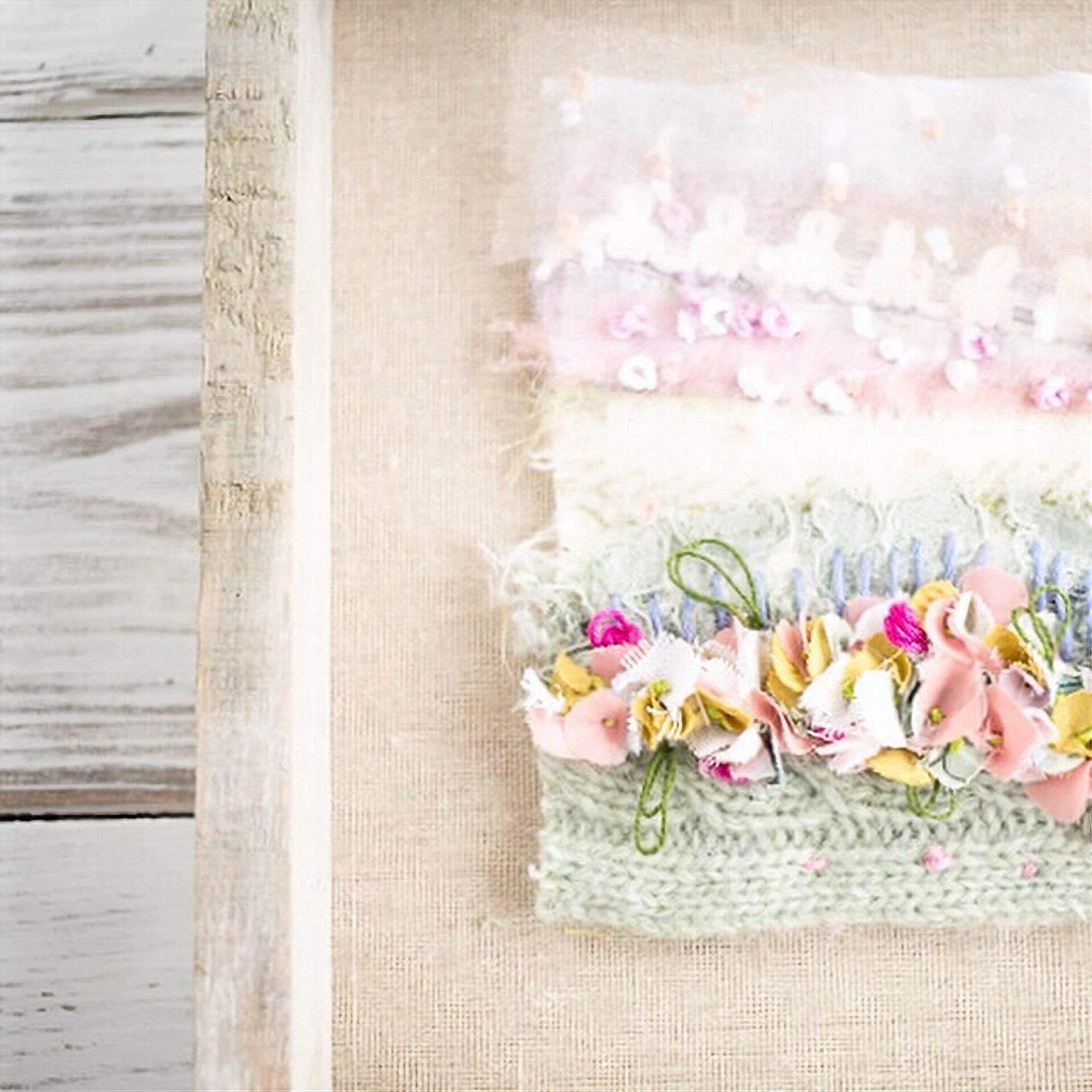
An artistic urge
TextileArtist.org: What initially attracted you to textiles as a medium? How was your imagination captured?
Emily Notman: I am one of those people who would describe themselves as leaning towards creativity. At school, I was not academic and I found myself most at home in the Art and Textile department. I headed off to Leeds College of Art straight from school, to complete a diploma rather than opting for A levels. It felt like a big risk at the time, but ultimately I knew that my future had to be creative. There, I developed a passion for paint, surfaces, printmaking, metal work and traditional photography. Every technique I dabbled in I fell in love with!
One day, the term “Applied Art” was mentioned, and this is where I decided my work and style would fit best. Up until then textiles had always been a small element in my work as in my head I linked textiles to something that had to be functional, and this made me nervous. I would sometimes borrow my mum’s sewing machine but struggled to sew in a straight line. Eventually I realised that I didn’t need to! With a new free-machine attachment I felt confident that textiles didn’t have to be wearable, functional or even durable but could be fragile, temporary and unconventional. This was a big turning point.
To me, textiles is all about texture, encompassing so many things from natural surfaces, to synthetic and man-made composites. In my third year at university I chose to specialise in embroidery and ceramics; it was a match made in heaven. I would take my embroidery samples, dyed yarn and shibori experiments into the glaze lab to match colours. Then I would press lace into clay surfaces, creating ceramic embellishments to stitch and adorn my textile pieces.
Texture became the main element of my pieces. I would describe my university course as perfect. Each department was packed to the rafters with all materials imaginable, and every piece of equipment you could ever dream of. There were evening classes every week in fibre arts, surface pattern and contemporary weaving. If only I could have stayed longer to trial every process! Unfortunately the course was discontinued a year after I left; I always wonder where all of those amazing resources ended up.
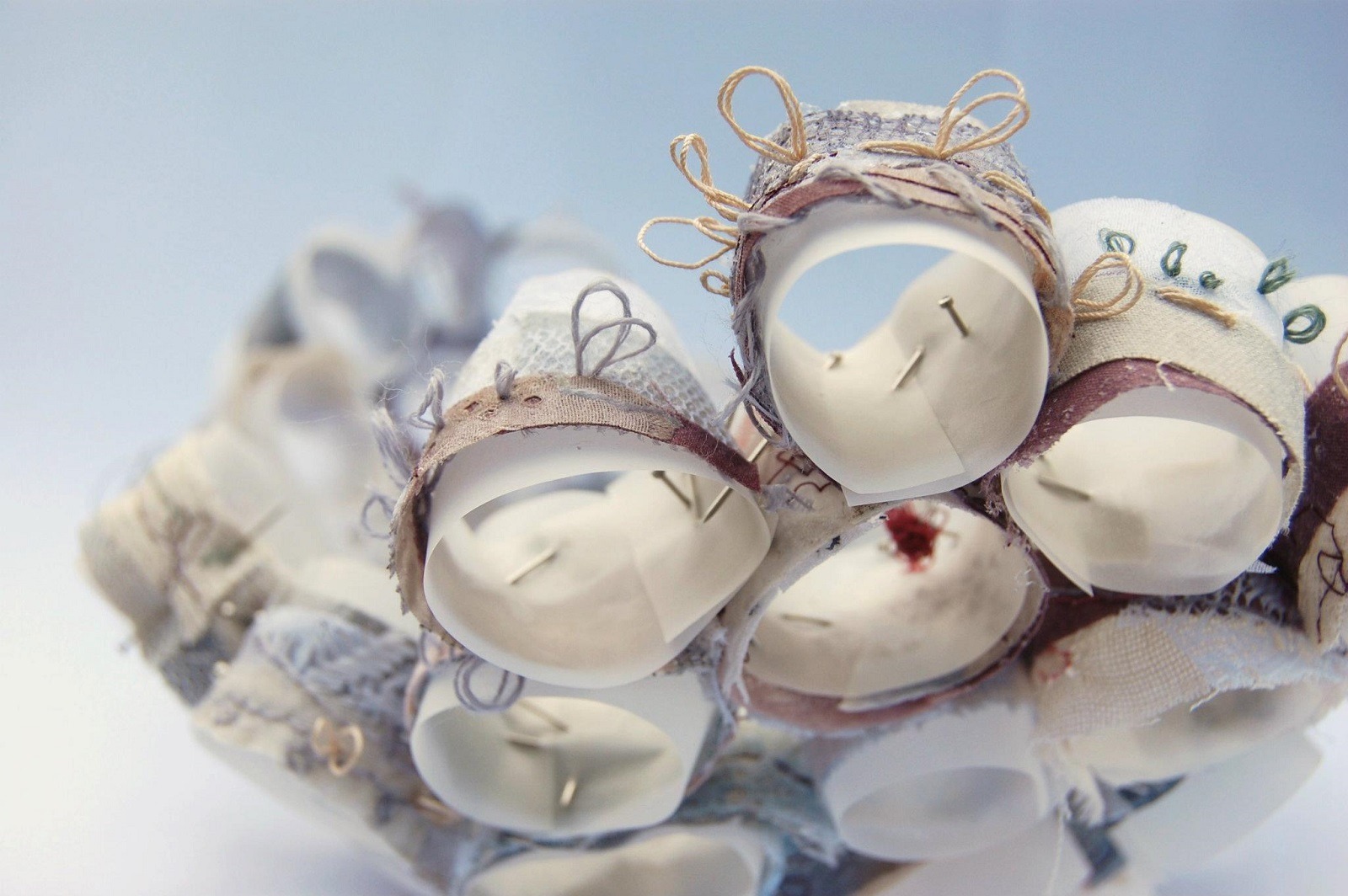
What or who were your early influences and how has your life/upbringing influenced your work?
My family provided me with a nurturing and creative upbringing in many different ways. My Grandad worked in the pottery industry in Stoke-on-Trent, where I was born. My aunt Yvonne was a talented bridal seamstress who always had creative tasks and activities ready for my visits. My final degree show work was dedicated to her as she sadly passed away whilst I was in my second year. Sewing these pieces definitely helped me to focus at a very sad time and I incorporated her cottons, fabrics and haberdashery into my final wall hangings, as a nod to her support and encouragement.
My mum ran a successful bridal floristry business from home and would work through the night on orders to please her customers. I think this is why I have always been determined to make a career from my passion; I aim to make things that people would love.
For many years my family travelled to Portugal each year. Here, I found myself surrounded with beautiful textures and colour combinations that influenced my work. A local fishing village close to our villa was full of inspiring balconies, flaky paint, old boats, lobster pots and intricate tiles.
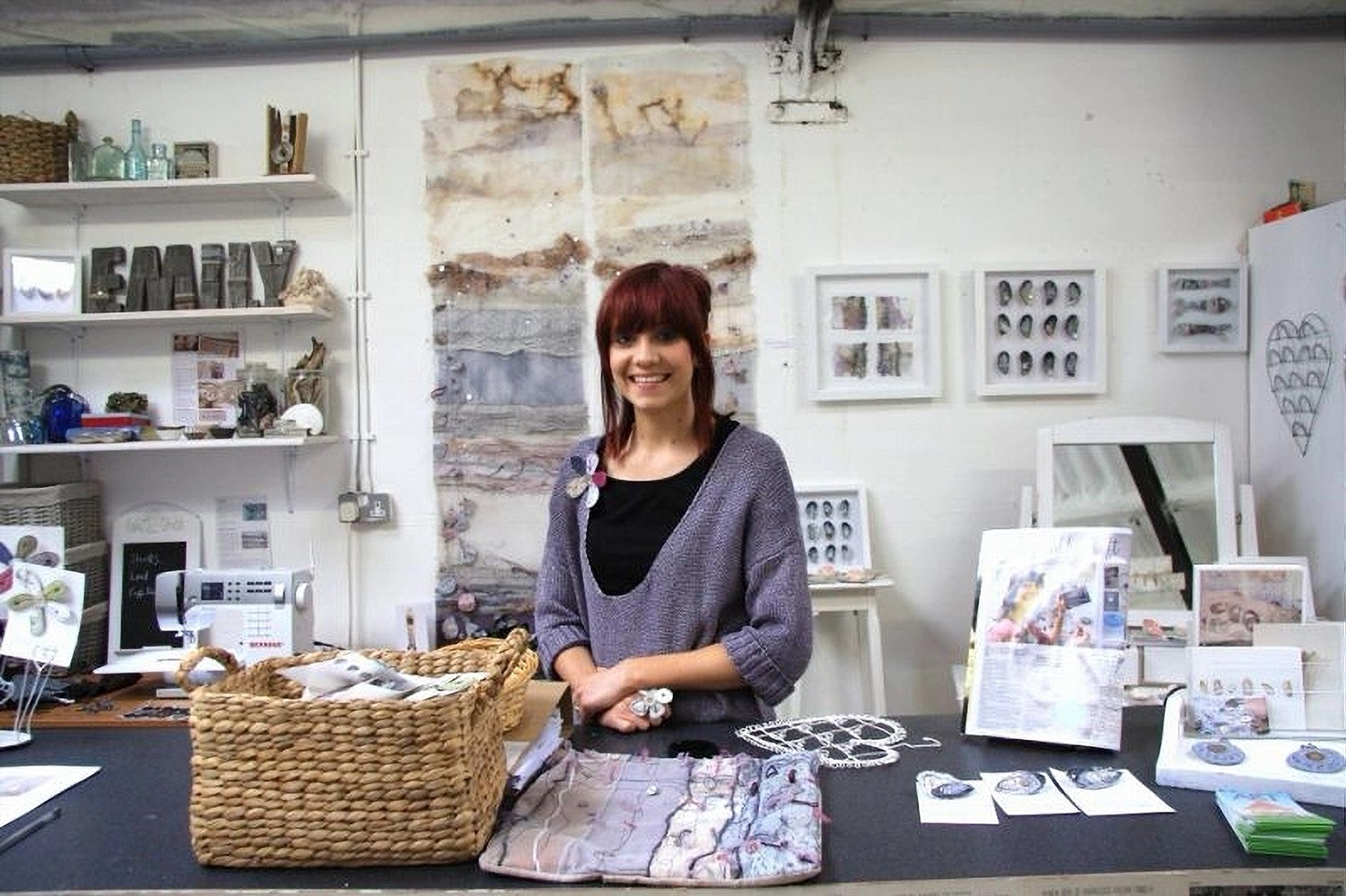
What was your route to becoming an artist?
With the support of my family, I took the plunge straight out of university, moving back to Staffordshire and into a studio space at Jennifer Collier’s Unit Twelve in Stafford. There I learnt about selling work, running workshops and applying for prestigious shows. I had support from the Princes Trust and was given a grant to support my studio rent and marketing.
To begin with, I washed plates at a local pub to fund materials and show applications. After a while, I began to earn enough money to leave that job and focus on my craft. It was 2012 and social media had just taken off, so I managed to build up an audience quickly.
I feel unbelievably lucky to have been able to work as an artist straight after my graduation and have the chance to build up a body of work. Over the last ten years I have run numerous workshops throughout the UK, talked to many groups and pupils about my journey and made hundreds of pieces. I still pinch myself! I am living my dream and could not wish for a better career.
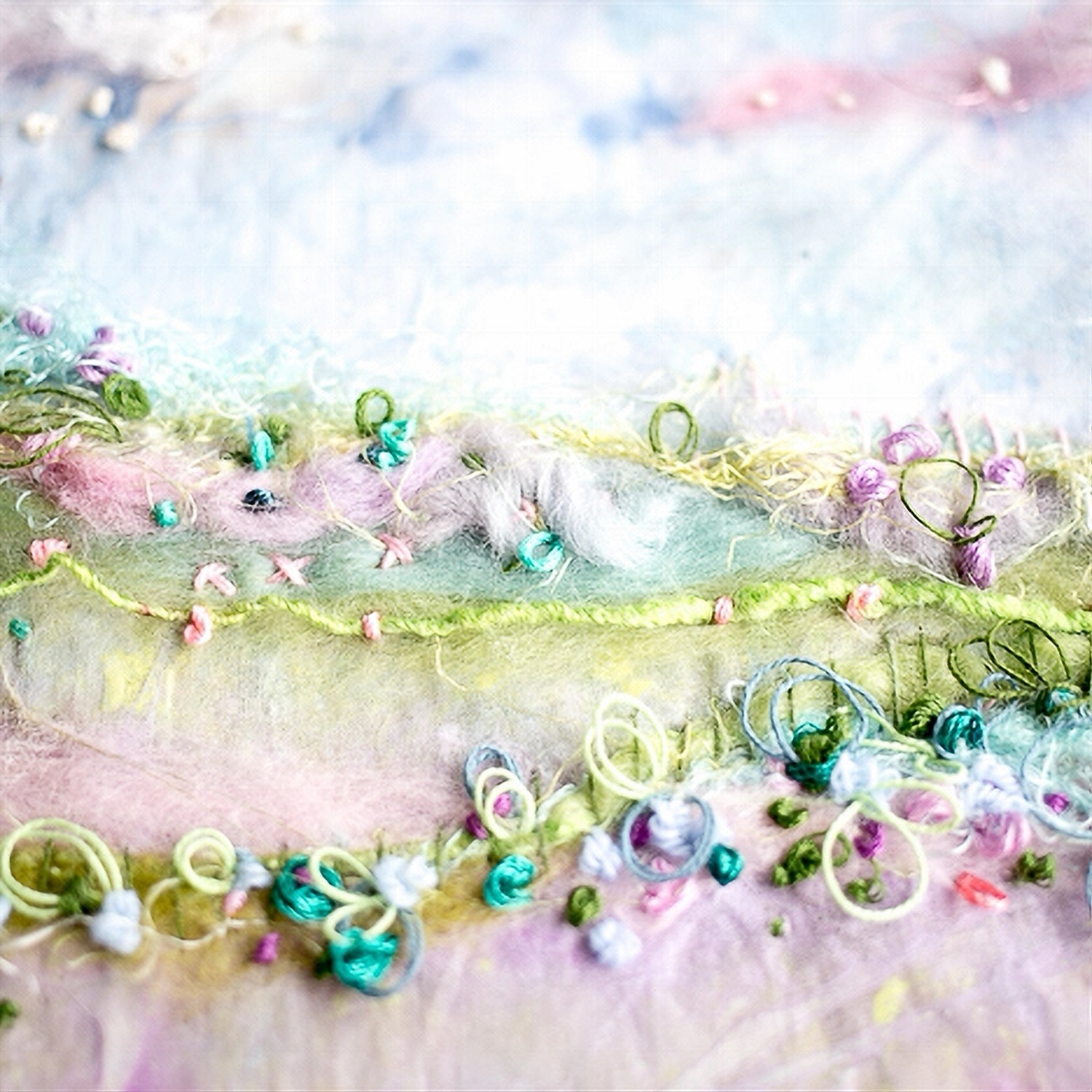
Wild experimentation
Tell us about your process from conception to creation
I work in a very uncontrolled way! I understand that my process would not suit everyone. I try not to plan a piece of work except for special scenes for bespoke commissions.
Initially I challenge myself with a range of different materials or textures and see where they take me. Some pieces can be on the go for months. For me, the challenge is knowing when to stop, as I definitely thrive with a deadline!
Working on commissions and scenes from a photograph, however, I find that planning out the layout first is key. Textures and patterns of fabrics inform layers and composition. Yarns and cottons are dyed to create the most authentic match.
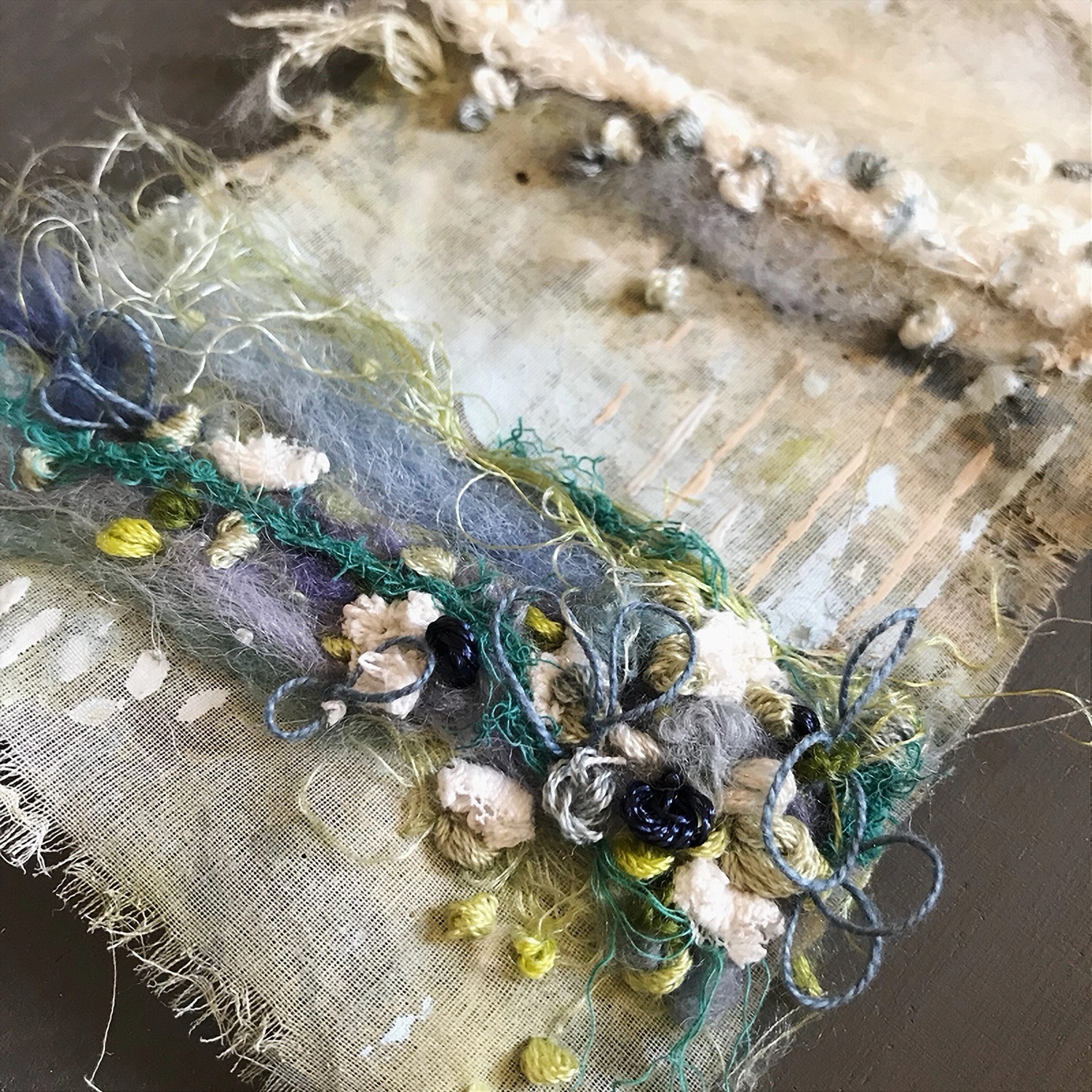
Tell us a bit about your chosen techniques and how you use them
In most pieces I build up texture first, using a neutral colour palette. And hand embroidery allows me to manipulate the fabric and apply decoration at the same time. I find this part of the process mindful and rewarding. I apply fabrics together aiming for a chunky texture, using a wide range of thick cottons and yarns.
I move on to explore mark-making and colour application with paints, inks and dyes. I use many paints to dye my pieces including emulsion, watercolour or natural, handmade dyes.
At university I would work with a pipette and ink, drawing from observation. One day I decided to test this process on fabric. I loved the uncontrolled effect so I further developed it by applying marks and patterns making use of unusual objects, mostly things from my recycle bin!
Once a piece is dry, I add contrasting decoration and appliqués, making use of a range of yarn, wool and embroidery thread. Sometimes I make my own embellishments using air-drying clay, wire and dressmaking pins.
I have explored working into a range of surfaces including paper, Bondaweb, leaves and knitted fabrics. On some occasions I have left work outside to become weathered and develop its own colour palette. I aim to push my process, so that my work is always evolving.
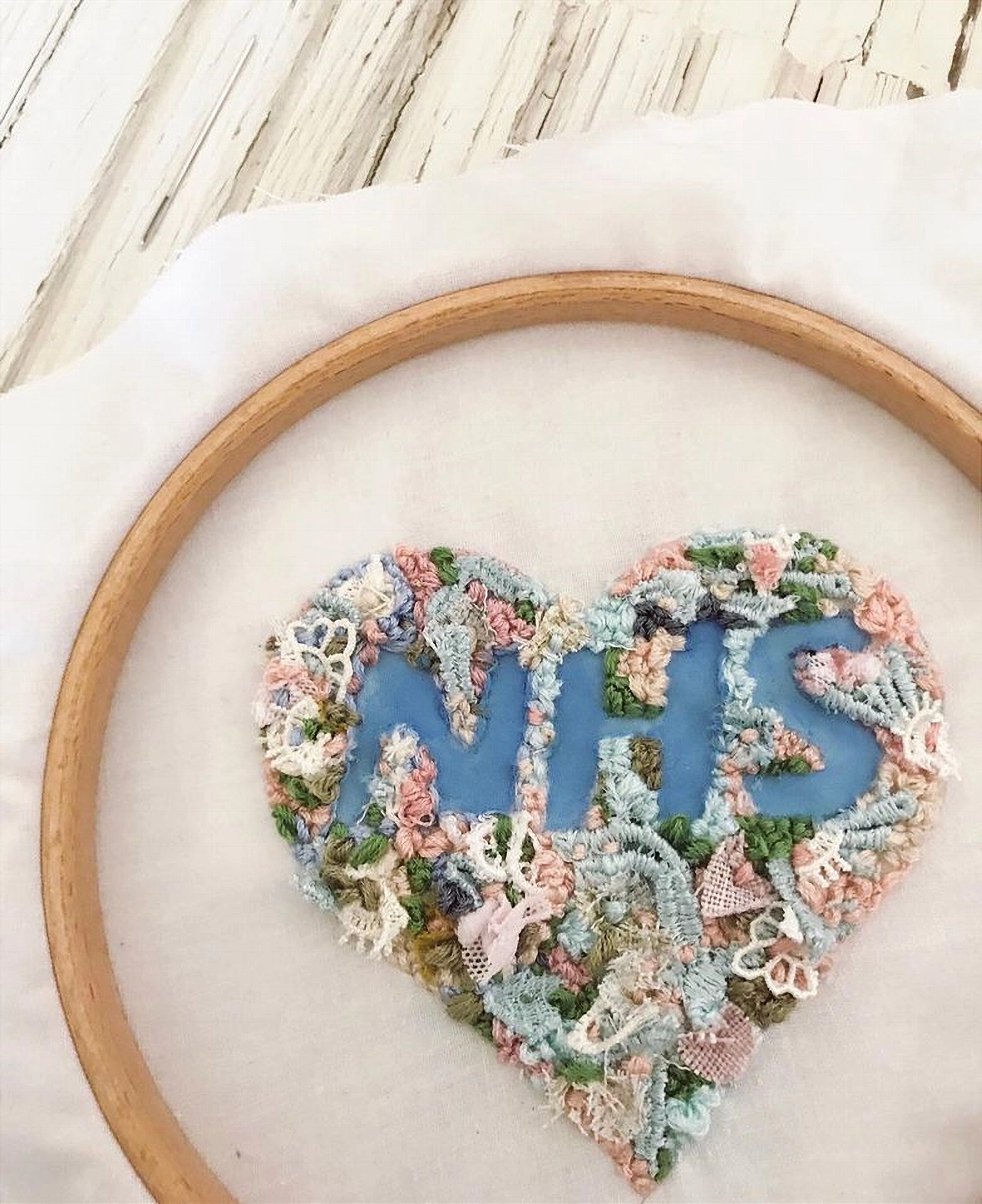
What currently inspires you?
During the lockdown restrictions it has been challenging to find inspiration from travelling to different areas or new places. Instead my work has developed into a comfort and personal escapism. I have been inspired by many makers online, seeing how they are adapting their business and working to survive the challenges of what is happening in the world.
I created a piece for Lucy Martin’s ‘Creators assemble’ initiative, where makers were invited to use her template to make a piece in celebration of the UK National Health Service. I decided to give away my work to an NHS worker and asked for nominations from family and friends. It was an incredibly rewarding and exciting experience, making a piece that could bring a little joy to someone that was working so hard to keep us safe.
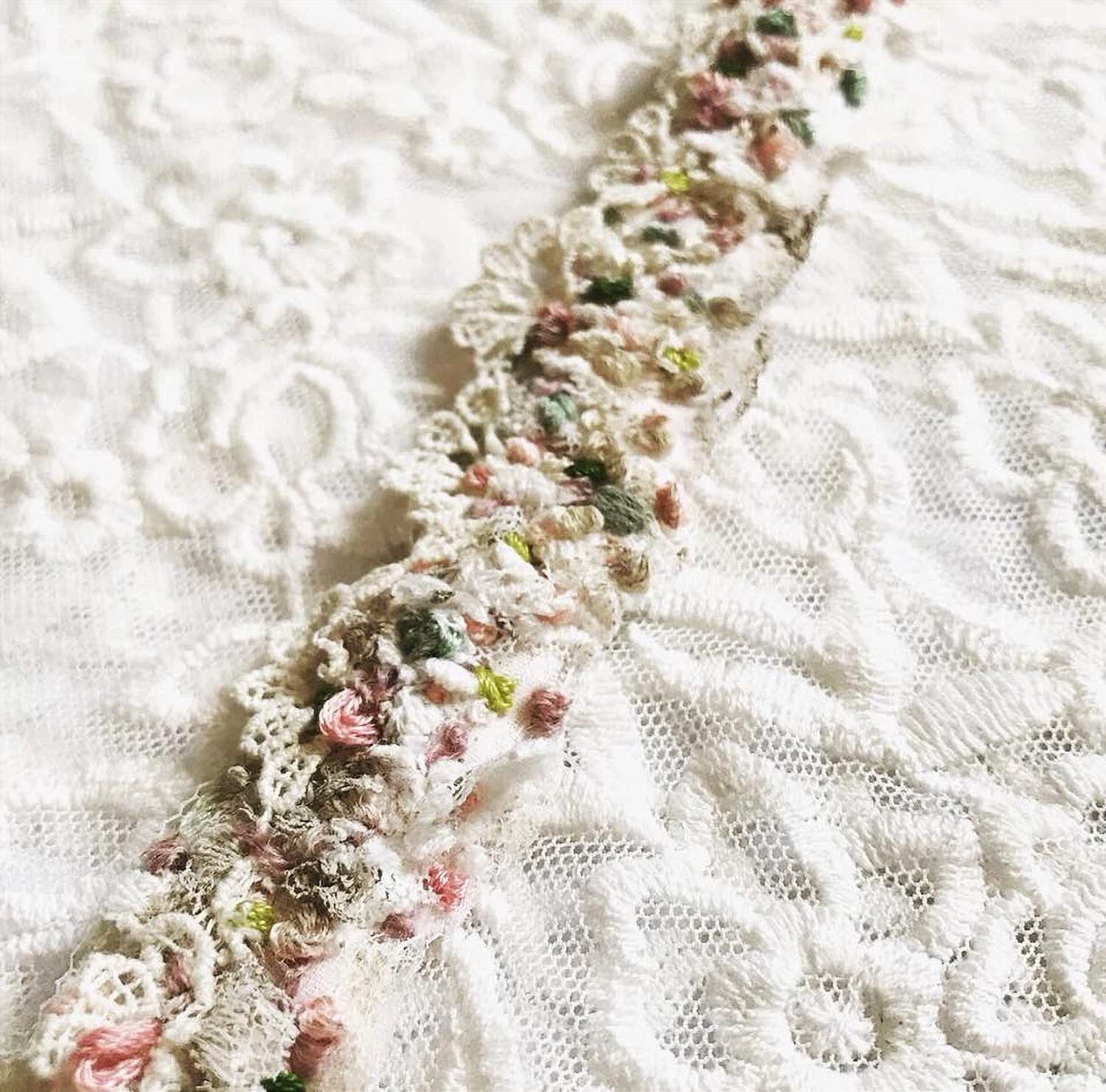
Branching out into wearable art
Tell us about a piece of your work that holds particularly fond memories and why?
I was approached by someone who had already collected many pieces of my work. She was getting married and wanted to wear a piece of mine on her wedding day. Not only was I honoured to make something bespoke for such a special day but it was also a lovely link back to my aunty who had provided such inspiration growing up.
I hadn’t made anything functional before so I was very nervous to start. The piece was made up entirely of hand stitched knots and appliqué, with every stitch I thought back to my own wedding day and I felt so proud to be trusted with the task.
The finished piece sat around the bride’s waist on a plain lace dress. It was inspired by overgrown meadows with pale pastel lace and floral pops of colour. Apparently her husband thought it was funny that she managed to sneak my work into their wedding day!
Creating this piece lead to me applying much more detail to my subsequent work and I went on to develop a small collection of wearable art pieces.
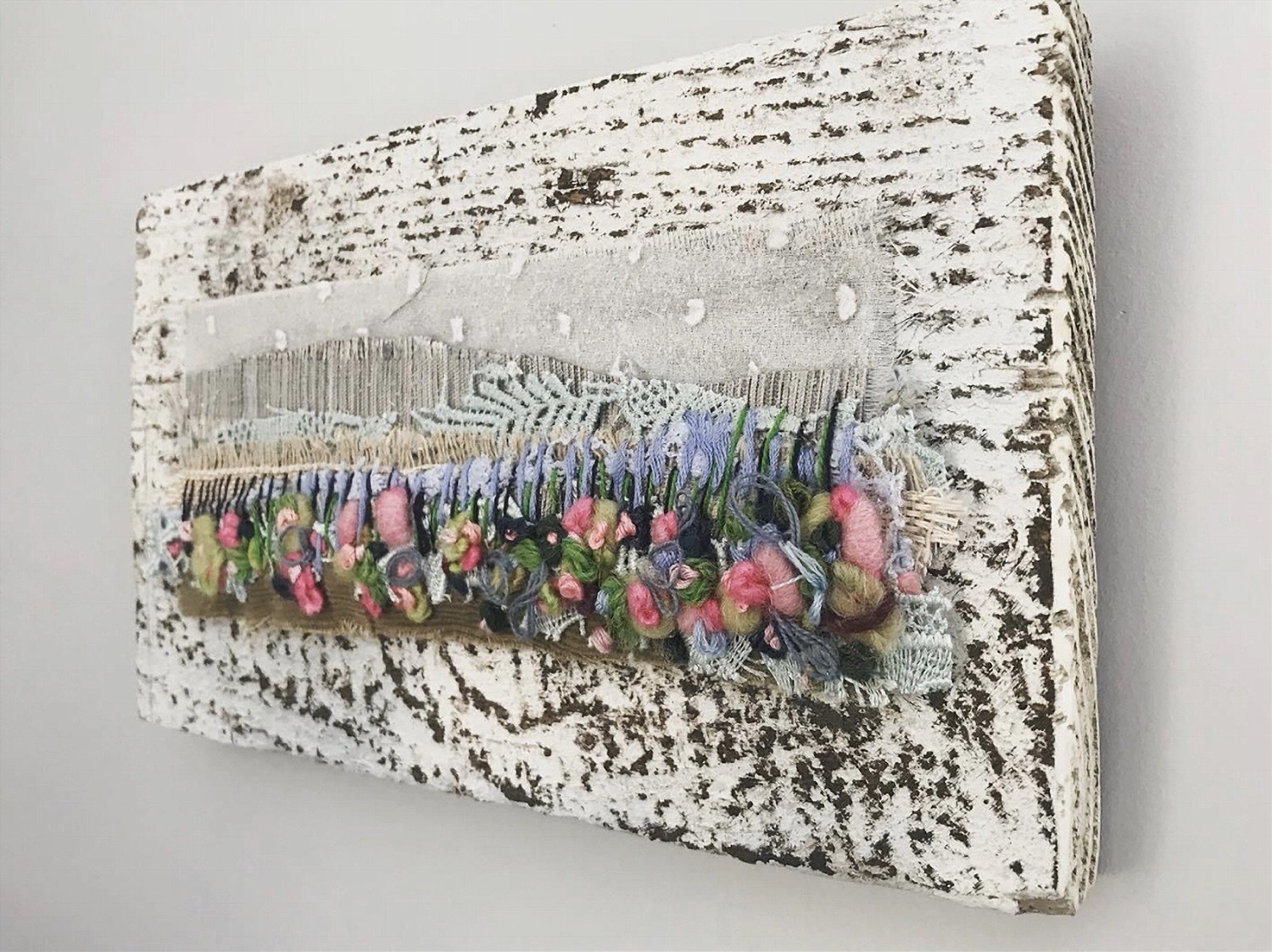
How has your work developed since you began and how do you see it evolving in the future?
My work has certainly become more textured, intricate and detailed as my skills, confidence and pace has developed. I have flipped my process by working with a lot of neutral colours before applying paint. This keeps my work developing and evolving over time.
My work has become more recognisable as landscapes and now most of my commissions are of favourite views and scenes. Recently a lovely customer asked me to make a large metre-long wall hanging to capture the view from her late Mum’s garden. The view included a church that had special meaning to the family. To be trusted with commissions like this is incredible, and something I would love to continue doing in the future.
For more information visit www.emilynotman.co.uk
What is it about Emily’s work that most appeals to you? The colours, the textures or the stitched detail? Let us know by leaving a comment below.
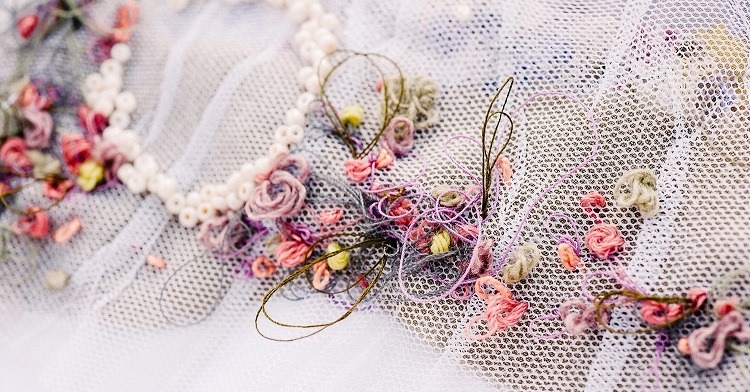

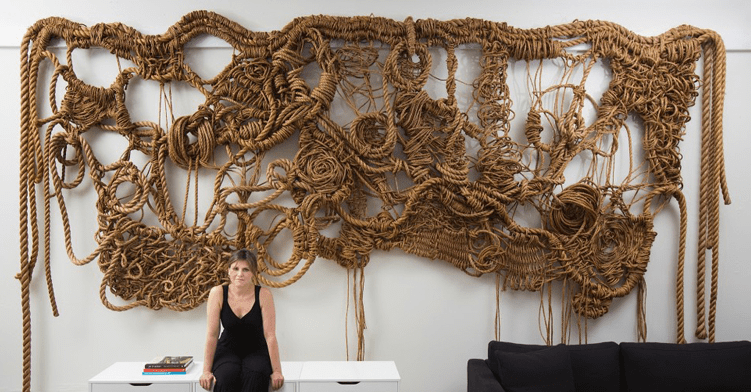
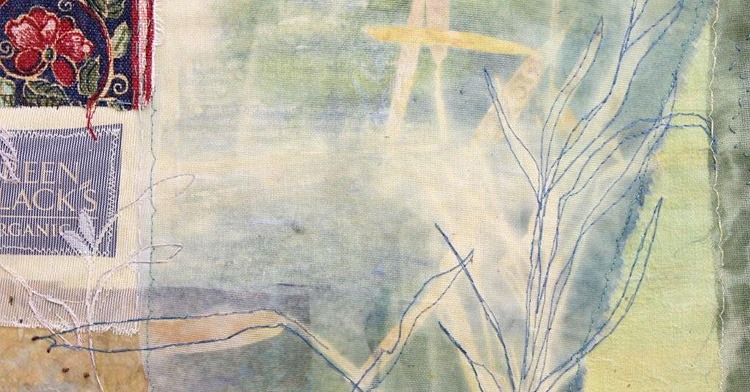
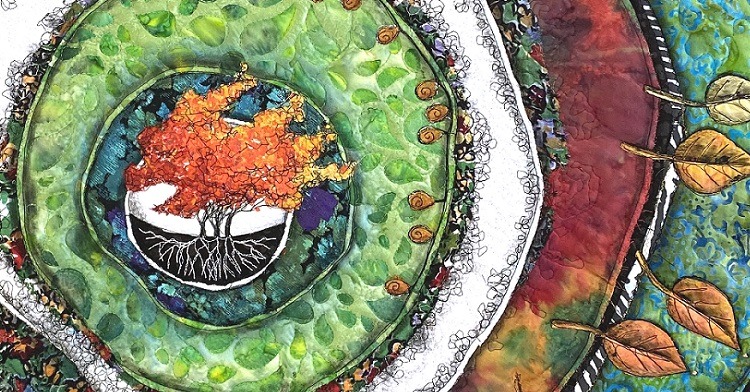
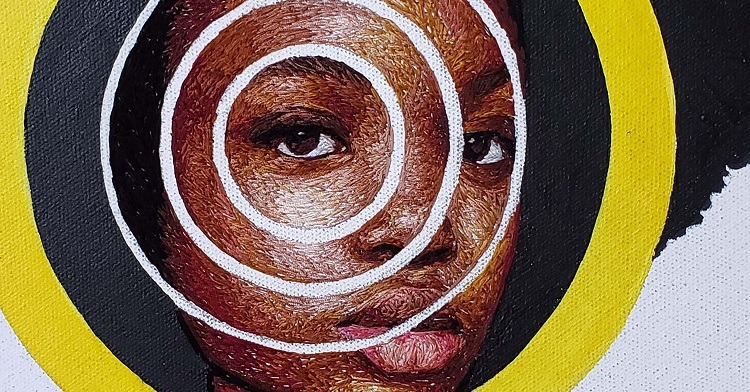
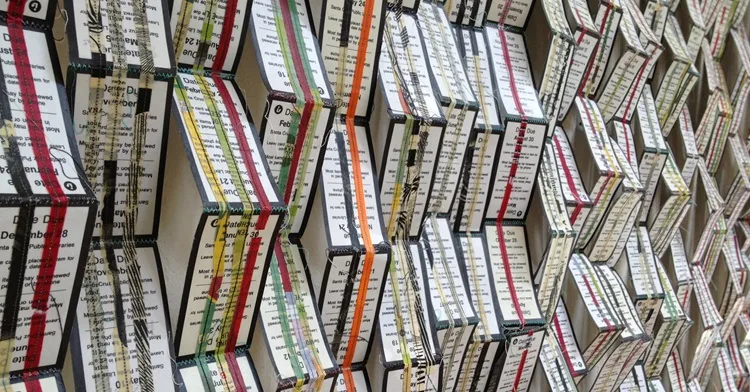
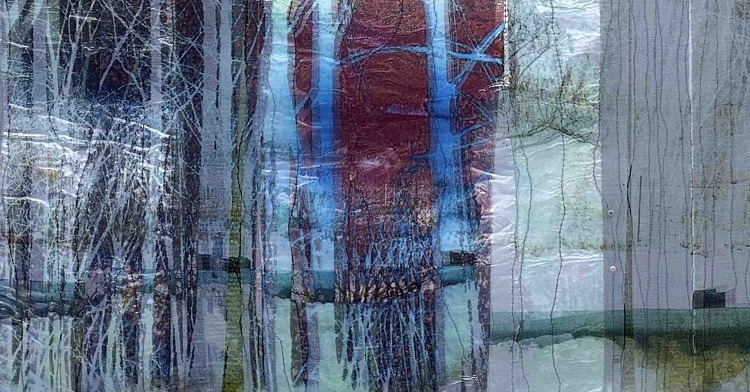
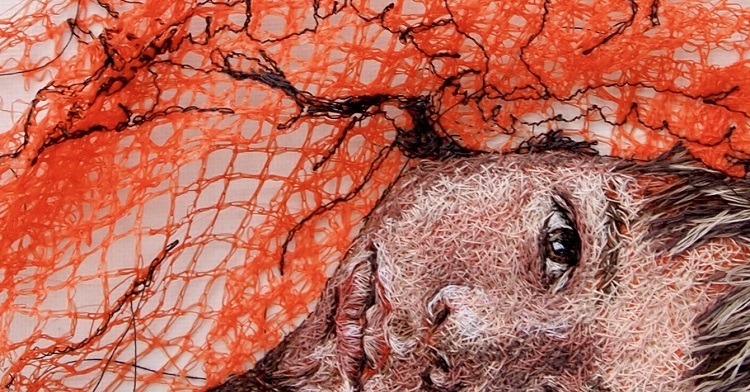
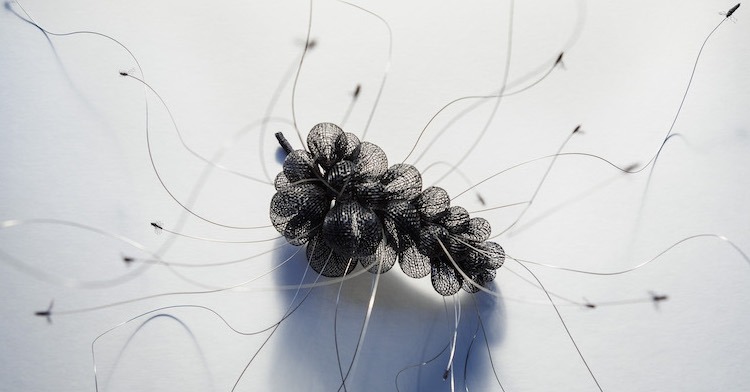
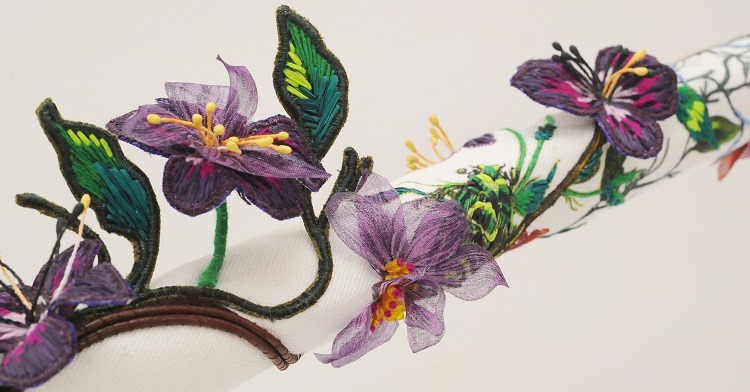
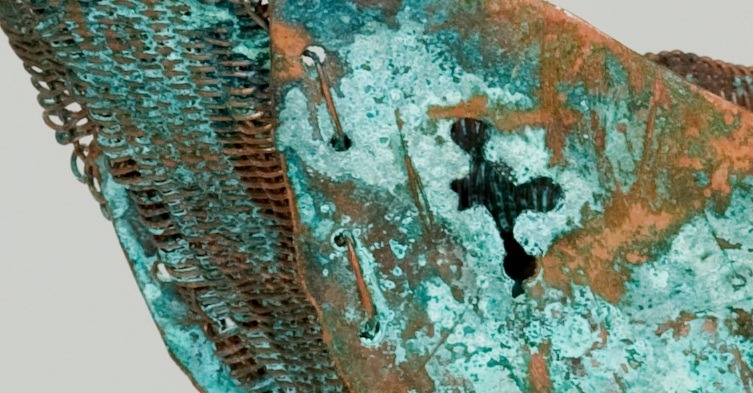
2 comments
Ася
🥰
Patricia deLiberato
Emily, your pieces give me great joy and hope in these bleak, no contact times. They remind me of my childhood
days full of running in the woods and walking through my Mother’s garden. Such peace and beauty. Thank you